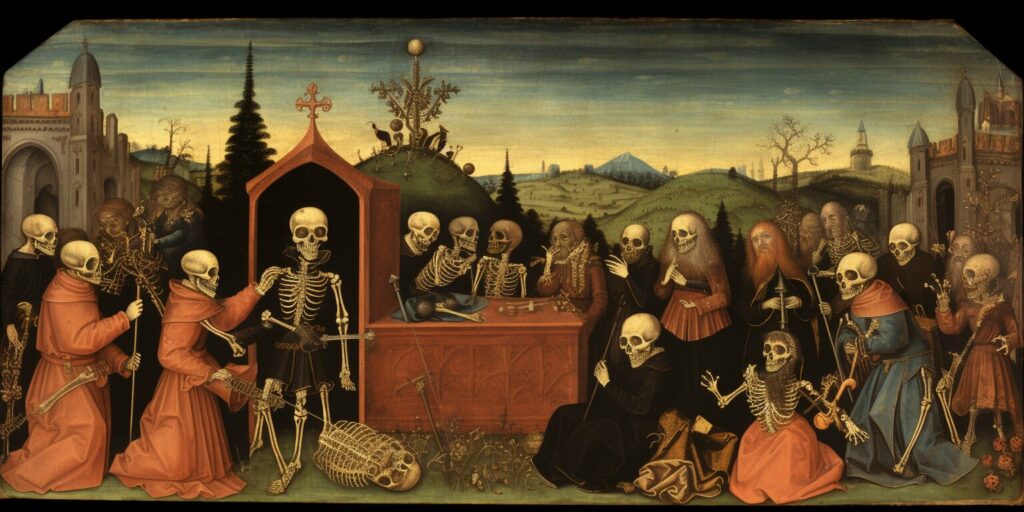Medieval times, also known as the Middle Ages, spanned from the 5th to the 15th century and was a period characterized by chivalry, feudalism, and the rise of castles and cathedrals. The daily life of people during this era was shaped by their social status, occupation, and available resources. Let’s delve into the various aspects of daily life in medieval times.
Social Structure
The society in medieval times was structured into three main classes: the nobility, the clergy, and the common people. The nobility, including kings, lords, and knights, held significant power and wealth. The clergy, consisting of priests, monks, and nuns, had influence over religious matters. The common people, comprising peasants and artisans, formed the majority of the population and worked the land.
Occupations and Daily Work
Occupations in medieval times were largely determined by social class. Nobles focused on warfare, governing their lands, and participating in courtly activities. The clergy were responsible for leading religious services, copying manuscripts, and providing education. Common people worked as farmers, blacksmiths, carpenters, and other artisans, contributing to the production of goods and agriculture that sustained the society.

Credit: www.medievalchronicles.com

Credit: knightstemplar.co
Life in a Medieval Village
Medieval villages were the heart of daily life for common people. They were typically structured around a central marketplace and surrounded by fields for farming. Houses were constructed from natural materials like timber and wattle and daub. Villagers gathered at the marketplace for trade and social interactions, and community events such as fairs and festivals were important occasions for bonding and commerce.
Food and Diet
The medieval diet was influenced by the availability of local produce and resources. Bread, porridge, and ale were staple foods, while the wealthy enjoyed a more varied diet including meats, fruits, and spices. Hunting and gathering supplemented the agricultural diet, and communal meals were a common social activity. The lack of modern preservation methods meant that food had to be consumed fresh or dried for long-term storage.
Health and Medicine
Healthcare in medieval times was based on a combination of folklore, natural remedies, and religious practices. Herbalists and wise women provided treatments for common ailments, while barbers often performed simple surgeries and tooth extractions. Monasteries played a key role in providing medical care, and the belief in the healing power of prayer was prevalent. However, life expectancy was relatively low, and outbreaks of diseases such as the Black Death had devastating effects on the population.
Leisure and Entertainment
Despite the hardships of daily life, people in medieval times found ways to indulge in leisure and entertainment. Festivals, music, and dance were popular forms of recreation, bringing communities together in celebration. The upper classes engaged in hunting, falconry, and elaborate feasts as a display of wealth and status. Storytelling, juggling, and other performances provided entertainment for both the rich and the common folk.
Education and Knowledge
Education was primarily accessible to the nobility and the clergy, with monasteries and cathedrals serving as centers of learning. The trivium and quadrivium, comprising subjects like grammar, logic, arithmetic, music, and astronomy, formed the basis of education for the privileged few. Manuscript production and illumination were essential skills, and knowledge was largely preserved and transmitted through written texts and oral traditions.
Frequently Asked Questions For Daily Life In Medieval Times: Unveiling The Mysteries Of The Past
How Did People In Medieval Times Dress?
People in medieval times dressed in clothing that reflected their social status and occupation.
What Types Of Food Did People Eat In Medieval Times?
In medieval times, people ate foods such as bread, meat, fish, vegetables, and fruits. The availability of certain foods varied depending on the person’s social status.
How Did Peasants Live In Medieval Times?
Peasants in medieval times lived in simple houses or huts made of wood and thatched roofs. They worked in the fields and were responsible for farming and producing food.
What Forms Of Entertainment Were Popular In Medieval Times?
Popular forms of entertainment in medieval times included jousting tournaments, music, dance, storytelling, and performances by traveling actors and musicians.
Conclusion
In conclusion, daily life in medieval times was shaped by the intertwined influences of social structure, occupations, and available resources. While the nobility, clergy, and common people led different lives, they all contributed to the rich tapestry of medieval society. From the bustling village markets to the grand feasts in castles, each aspect of daily life reflected the values and dynamics of the medieval world.
For more articles on historical periods and daily life, visit our website regularly for informative content!
Guest Author Sakhawat-Shuvo wrote and edited this Article based on his best knowledge and understanding. These opinions and remarks are not endorsed or guaranteed by epichistoria.com or EpicHistoria. The Epic Historia does not guarantee this article’s content. Readers should verify and use their judgment before trusting the content. Also, the Images used in this Article are the copyright of their Respective Owners. Please use our Comment Box or Contact Us form to report this content. This information is not accountable for losses, injuries, or damages.